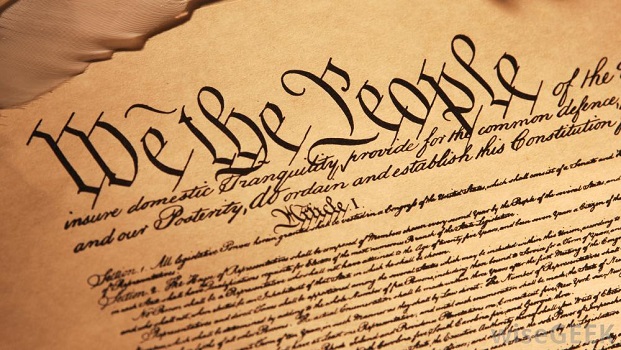
We’ve known for a while—thanks to the National Assessment and other measures—that American primary-secondary students aren’t learning a heckuva lot of civics, never mind that social studies is taught everywhere and taking high school civics is a widespread graduation requirement. Indeed, the Education Commission of the States reports that:
- “Every state requires students to complete coursework in civics or social studies in order to graduate….
- Thirty-seven states require students to demonstrate proficiency through assessment in civics or social studies. [and]
- Seventeen states include civic learning in their accountability frameworks.”
That it isn’t working very well was obvious when, for example, NAEP assessed civics in 2006 and found that fewer than a quarter of high school seniors could supply a satisfactory answer to a question about the means by which citizens can change laws. Or when the Annenberg Public Policy Center surveyed American adults in 2014 and found that only 36 percent could name the three branches of the U.S. government.
That it isn’t working very well on a long-term basis is painfully evident from the recent behavior, voting patterns, and discourse of millions of American adults, including some at the highest levels of government.
Fortunately, there’s continuing awareness that this is an unsolved problem, including personal attention from such eminences as Sandra Day O’Connor and Colin Powell—and a “summit” today that’s devoted to catalyzing improvements in it.
What’s brought this failure into sharpest relief in recent days, however, was release of a seriously alarming survey by the Brookings Institution’s John Villasenor. He polled college students last month to gauge their understanding of the First Amendment’s free-speech clause.
(In case you’ve forgotten, the exact wording says “Congress shall make no law…abridging the freedom of speech…or the right of the people peaceably to assemble, and to petition the Government for a redress of grievances.” And in case you’ve forgotten another key bit, in 1925 the Supreme Court ruled that the Fourteenth Amendment extended this protection to apply to state as well as federal actions.”)
Nothing is more basic to civic education than the First Amendment, and nothing is more fundamental to a free society than freedom of speech. We pretty much take for granted that this is a keystone of anything called civic education. Moreover, an occasional criticism of civics curricula is that they overemphasize citizens’ rights at the expense of their responsibilities.
Yet check out Mr. Villasenor’s survey findings—and keep in mind as you do that those he is surveying are current college students, which means (a) they are recent products of K–12 civics education and (b) they are among the more successful products of our K–12 education system.
Here’s some of what he found:
- “Does the First Amendment protect ‘hate speech’?”
- Just 39 percent said yes.
- A “public university invites a very controversial speaker to an on-campus event,” a person “known for making offensive and hurtful statements,” and “a student group opposed to the speaker disrupts the speech by loudly and repeatedly shouting so that the audience cannot hear the speaker…Do you agree or disagree that the student group’s actions are acceptable?”
- 51 percent said yes (including 62 percent of those who identify as Democrats).
Words fail me. “Appalling,” “unacceptable,” “outrageous”, “inexcusable.” None of them does justice to the implications of these findings. More than half of current U.S. college students think it’s OK to shout down a speaker who says offensive things. Not even two out of five understand that the First Amendment protects the kinds of speech that you don’t like hearing.
The survey goes on to show that many also think it’s OK to use violence to suppress such speech from being uttered—or heard.
No wonder the Wall Street Journal editorialized that “Madison Weeps.”
It’s important, obviously, for the colleges themselves to clean up their acts, though it won’t be easy given the dispositions and behavior of many faculty members and the wimpishness of campus leaders.
But what does this say about civics education before they get to college—and go out into adult life? It says to me we are looking at a total failure. Indeed, it says to me that Mr. Villasenor’s survey tells us once again that we remain a nation at risk.
No, it’s not entirely the schools’ job to inculcate both civics knowledge and civic values (and civil behavior) into young people. Parents, community groups, churches, scouts and coaches share this responsibility. But fifty states think they’re teaching civics.
How well are they doing it? I’m reminded of an old but telling query by Sy Fliegel (early hero of school choice in New York): “Define the word ‘taught’ in the following sentence: ‘I taught my son to swim but every time he gets into the pool he sinks to the bottom.’”
This is serious, folks.
